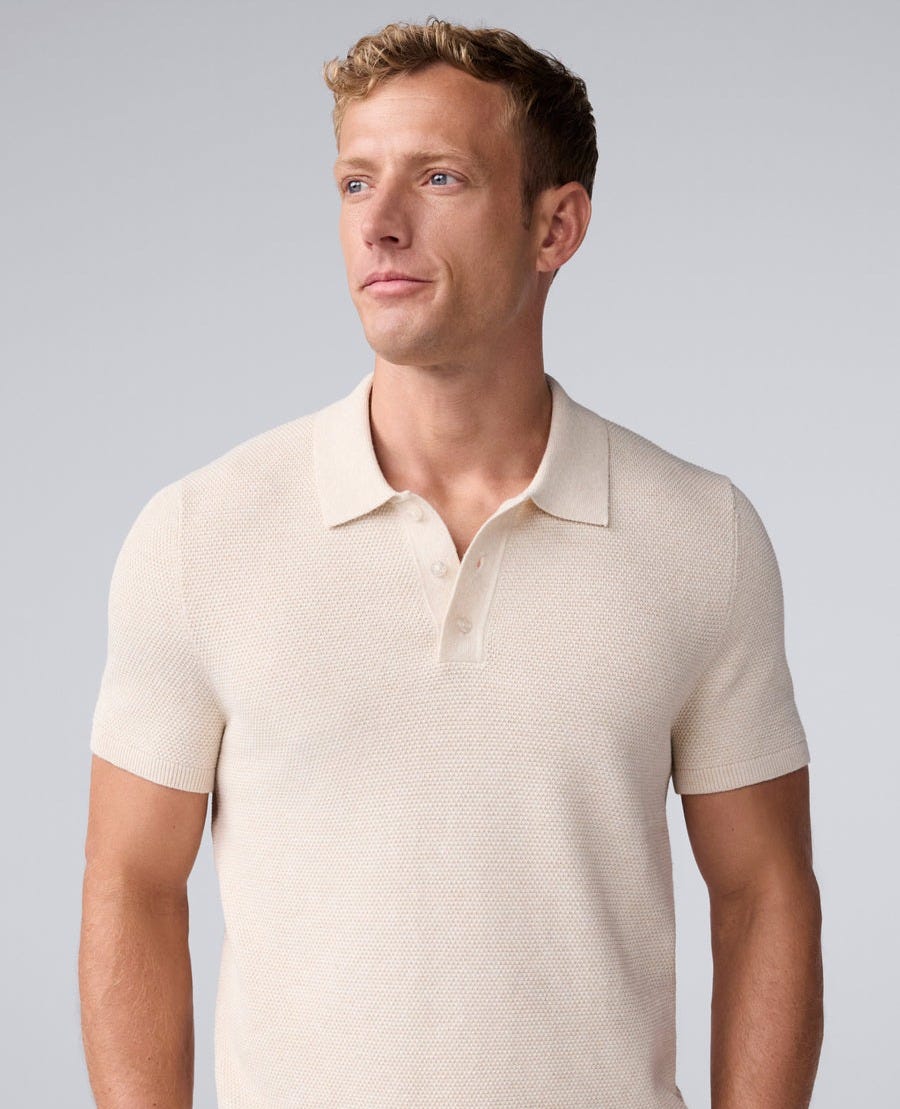Luau Don Draper. The Talented Mr. Ripley. Tablecloths.
For better or worse, that’s what the general population (including your humble blogger) tends to think about when they think about linen. But there’s a lot more to the classic textile than meets the mind’s eye.
Just this month, we launched an expansion of our cult-favorite Tech Linen collection, including a new long sleeve crew, button up sweater polo, and hoodie. To mark the occasion, I caught up with our Design Director Henry Martinez to put together this brief primer on the fabric—and share some of the thinking behind our own pieces.
An Insultingly Brief History of Linen
Believe it or not, linen was the fabric of choice for many millennia. The Ancient Mesopatamians dressed their ruling classes in it. The Ancient Egyptians wrapped their mummies in it. The Ancient Greeks clad their soldiers in layers and layers of it, as a breezier alternative to metal armor (hey, comfort is king). In the runup to the Revolutionary War, American colonists cultivated it on their own in order to stick it to the British.
Then, in the late-1700s, Eli Whitney invented the cotton gin, making the textile cheaper to produce at an industrial scale. Gradually, linen became more of the “luxury” fabric we know and love today.
How Linen Is Made, in One Paragraph
Most people assume linen comes from cotton. But it actually comes from the flax plant. Through a long and complicated process we won’t describe here, the flax plant is broken down and fibers are derived from the bark to spin into a fabric you can ultimately wear while cruising along the French Riviera.
Wovens vs. Knits
Like pretty much all fabrics, linen falls into two categories: wovens and knits.
Wovens are made by interlacing two yarns together in a checkerboard-esque pattern. They’re highly structured and durable, but oftentimes less soft and stretchy. (Think: oxfords, blazers, pants.) Knits are made by interlooping one set of yarn. They’re soft and stretchy, but oftentimes less durable. (Think: sweaters, socks, scarves lovingly crafted by your grandmother.)
Stay tuned for the launch of our woven Tech Linen styles—coming soon.
The Natural Benefits of Classic Linen
Like cotton, linen is a natural fiber. Consequently, it offers a host of innate benefits, which make it the ideal fabric for warmer weather:
It’s hypoallergenic. Meaning it’s ideal for anyone with sensitive skin.
It’s antimicrobial. Fighting bacterias that generally cause odors.
It’s breathable. Linen is loosely woven for an airier look and feel.
It’s lightweight, but durable. Due to the hollow fibers of the flax plant.
It dries quickly. Lucky for us, the fabric does not hold moisture well.
In general, linen may have a crisper handfeel at the beginning—but it’ll soften over time.
The Modern Benefits of Tech Linen
Not content to rest on the fabric’s natural laurels, we sought to enhance our own linen collection in a few critical ways. As a result, Tech Linen is…
Stronger. We blend our linen with cotton to fortify the fabric.
Smoother. Because it’s a blend, Tech Linen is much less prone to wrinkling than classic linen. (It’s also machine washable.)
Breezier. We harness moisture-wicking COOLMAX® tech to make it even more breathable than usual.
In other words, it’s a great fabric for everyday wear, but it’s exceptionally well-suited to being placed in a suitcase for your next vacation.
Inspirational Cues
Last year, we launched our Tech Linen collection with two knit styles: the half-zip and sweater polo. This winter, we’re expanding the knits to include a long sleeve crew, button up sweater polo, and hoodie.
You might consider these “summer sweaters”—they’re warm enough to wear year-round, sure, but they’re also cool enough to wear on a breezy night in late-July (or while you’re sailing the high seas).
In terms of inspiration, these styles harken back to classic ‘50s and ‘60s weekendwear—the postwar period that saw a growing middle class, and thus an uptick in American leisure time. (The sweater polo, in particular, was a popular choice among dads looking to crack open a cold one on their porch.)
As for the color palette, we opted to keep things simple, sticking to earth tones with vacation-ready hues, like sandy Nomad Heather and sky blue Gulfstream Heather.
Explore the full Tech Linen collection in-store and online now—and keep an eye out for new drops in the months to come.





